The city of Bath in the county of Somerset is the most monumental and palpable proof that the reasons to travel to England go beyond its capital. Every month we publish in Magazine Horse our highlights a selection of cultural proposals around the world. And in them it is very, very rare not to find an event, exhibition or festival in London, a destination that we never tire of recommending for countless reasons. But today we are going to take the opportunity to discover a different city, Bath.
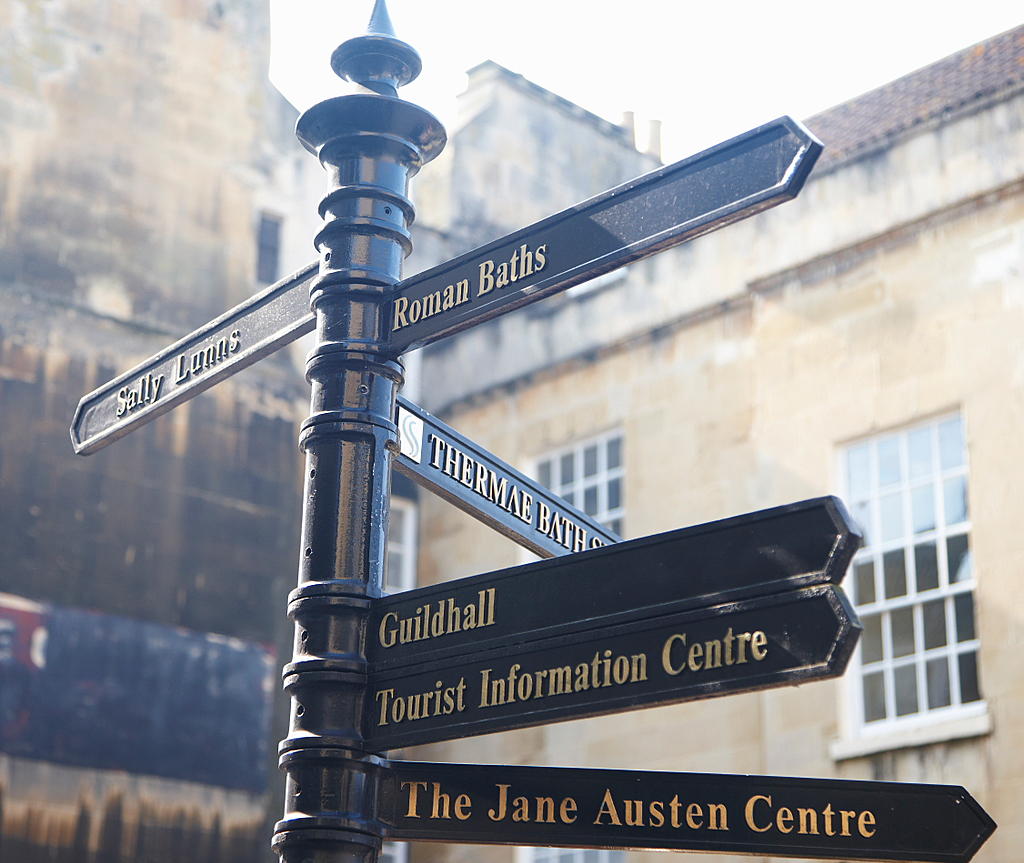
Bath tourist attractions. Photo courtesy of ©VisitBritain/ Joanna Henderson
Here disappears the hustle and bustle, the stress that is breathed in any London street, and also that need to be permanently to the last. In Bath we move to other sensations, or rather to another era, and all this being less than 3 hours by train or car from the capital. A distance more than salvageable and short considering the enormous sensory contrast it provides.
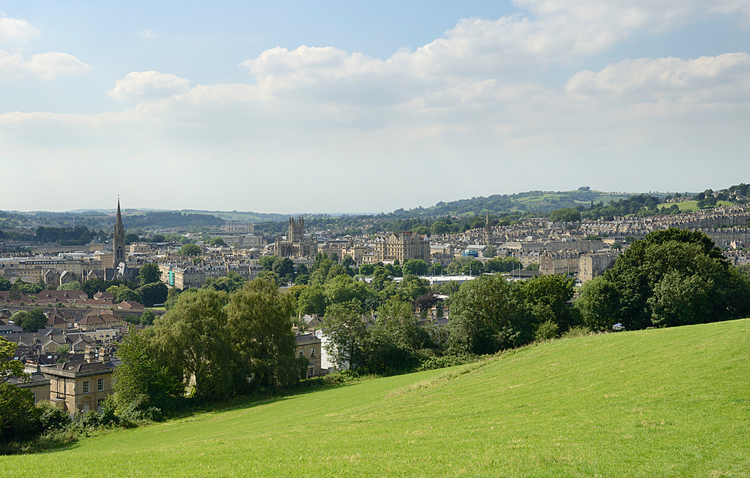
Panoramic view of Bath. Photo courtesy of ©VisitBritain/ Stephen Spraggon
Jane Austen, illustrious visitor to Bath
Who hasn’t seen period films like Pride and Prejudice, Emma or Sense and Sensibility? Well, all those period film productions are inspired by novels by Jane Austen. A woman who lived between the 17th and 19th century. A time she portrayed with flair. And she was scathing about her society, especially the upper classes. And certainly during her long stays in Bath she was able to know it in first person. Why? Because there was a time when this city became the favorite destination of the most elite of the British court.
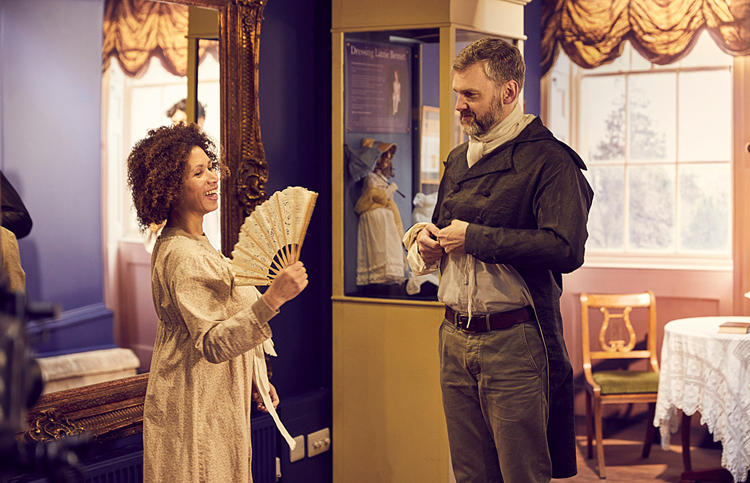
Jane Austen House Museum. Photo courtesy of ©VisitBritain/ Simon Winnhall
However, Austen approached those circles just right. She was always a free and independent woman who refused to be accountable, much less to follow stereotypes. She is a character, beyond her literature, and the best way to get to know her is by visiting her House Museum, where dramatized visits are made. With them you receive an entertaining lesson in literature and history of the city. If you know English, this may be the best place to start the visit and get in the mood.
The pinnacle of Georgian architecture
In this history of Bath there is a key fact. In 1702 Queen Anne of England arrived and enjoyed some thermal baths that made her repeat the visit on several occasions. That was the germ of the city we know today, a set declared a World Heritage Site by UNESCO.
The presence of royalty and all their court led to the construction of an extremely elegant city to accommodate such personages. And during the following reigns of the monarchs named George, the visits did not stop. So gradually a city full of mansions and palaces was created, many of which have become over time the greatest exponents of the so-called Georgian architecture.
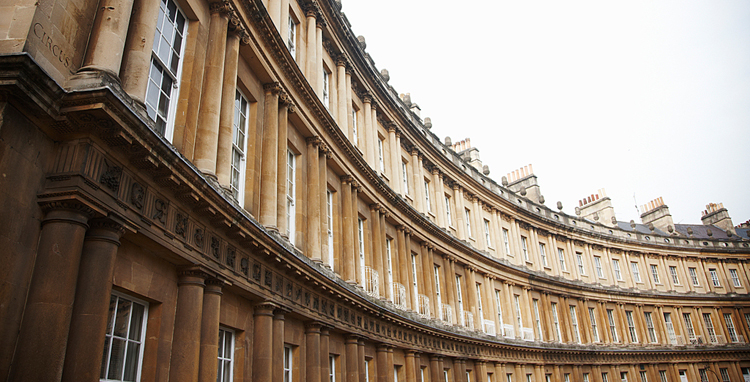
The Circus. Photo courtesy of ©VisitBritain/ Joanna Henderson
The great contributions of a small family
In this line above all it is necessary to emphasize what they designed the Wood, father and son architects who gave Bath a few jewels. For example, the Circus housing group, where the elements of classical art merge in a group of buildings to form one of the most attractive round squares in Britain.
And just a stone’s throw away is the imposing Royal Crescent, with a spectacular curved and stony facade, facing the intense green of huge gardens. It is a must to walk around there, lie down if the weather is nice and take countless photos. These gardens are with a kind of auditorium from which to enjoy the theatricality of this building as large as attractive.

Area view of the Royal Crescent. Photo courtesy of ©VisitBritain/Andrew Welsher
But the Wood’s built more interesting buildings. Another of them is the Assembly Rooms, an eighteenth-century space that can be visited. But it is rarely free, since its perfect preservation has made it one of the most demanded monumental sets for filming documentaries or period films. At least, it will always be possible to visit a part of the building where the interesting The Fashion Museum is located.
The oldest Bath
However, although the eighteenth and early nineteenth centuries were the golden age of Bath, the city existed long before. Already in Celtic times, several centuries before our era, the healing properties of the muds of the area were known. However, it was the Romans who discovered all the thermal potential of Bath, and they built the baths that today remain the most visited monument of the place and even gives it its name: the Baths.
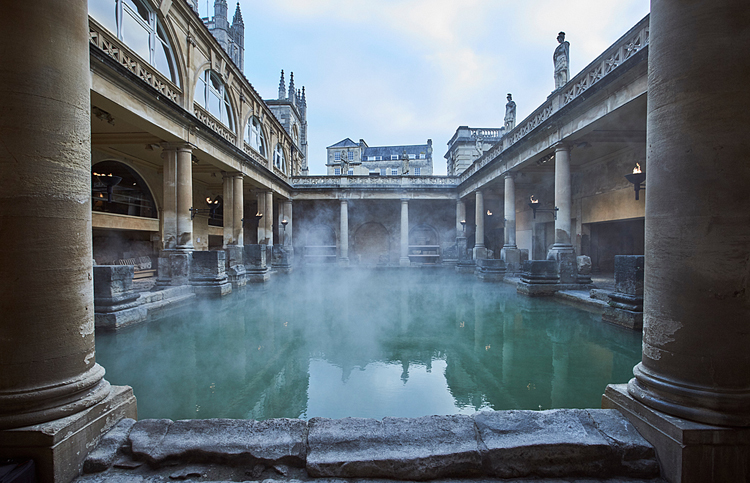
Roman Baths. Photo courtesy of ©VisitBritain
Although it is true that when the Romans abandoned the island and the Saxons became lords and masters of the territory, they forgot about those baths. And even later, when the Gothic Abbey of Bath was built, much of the rubble ended up burying the ancient spa.
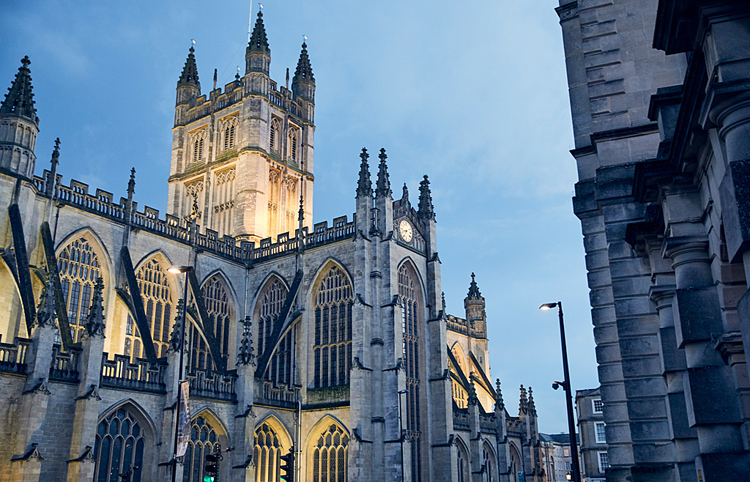
Bath Gothic Abbey. Photo courtesy of ©VisitBritain/ Simon Winnhall
Other relics preserved in the city
But today, both buildings, the abbey and the Roman baths coexist in Bath’s central square. The place where there is also The Pump Room, the cafe-restaurant that is almost identical to the times in which Jane Austen was a regular. Entering there is a must, and if you have a sweet tooth and love tea, much better in mid-afternoon, to take the succulent high tea, served on fine china and with the delicate pastries that transform a snack into an event.
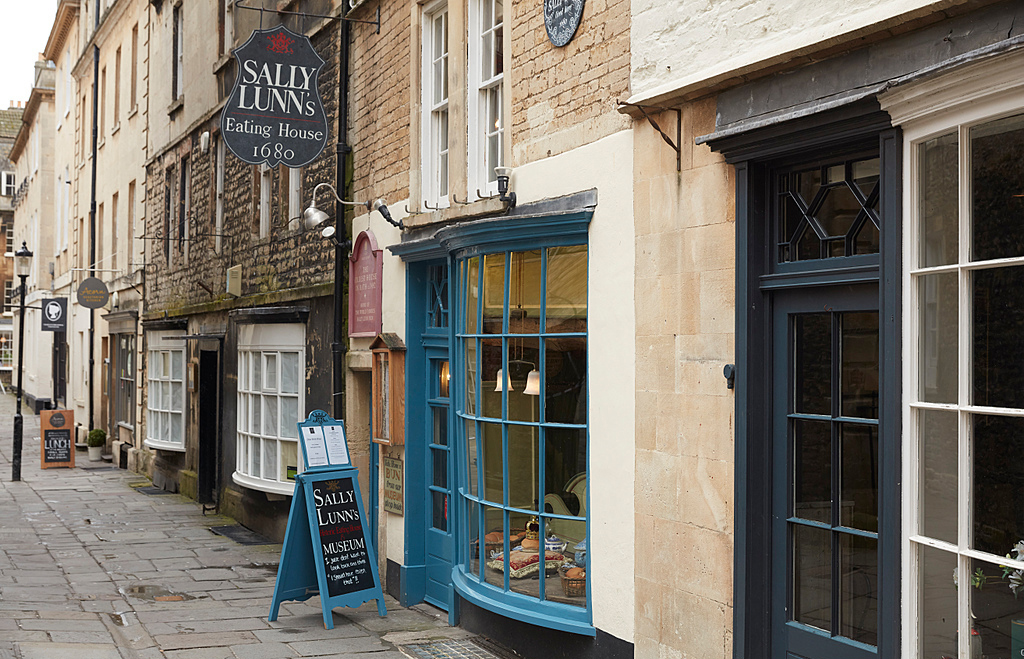
Sally Lunn’s. Photo courtesy of VisitBritain/Simon Winnhall.
However, it is not the only historic eating and drinking establishment in Bath. You can enjoy pub fare at The Garricks Head. It is also possible to go for a few pints and listen to live music at The Bell Inn. Or you must go to Sally Lunn’s located in a building that is more than 400 years old and where they still make the bread they serve to their diners.
In short, like almost everything in Bath, an experience that takes us to another time.




